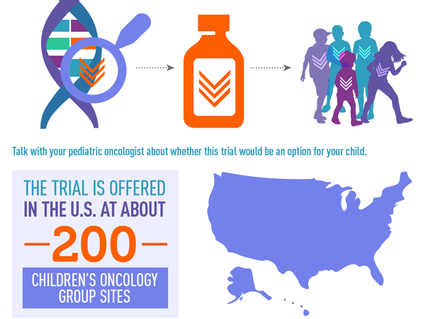Cancers in children
- Article
- 2021-01-30
A cancer diagnosis is troubling at any age, but especially if the patient is a child. It is normal to have many questions such as: Who should treat my child? Will my child get better? What does all of this mean for our family? Not all questions have an answer, but the information and resources on this page provide a starting point for understanding the basics of childhood cancer.
Types of childhood cancer
In the United States, an estimated 11,050 new cases of cancer will be diagnosed in children from birth to age 14 by 2020, and about 1,190 children are expected to die from the disease. Although the death rate from cancer for this age group fell by 65 percent between 1970 and 2016, cancer remains the leading cause of death from illness in children. The most common cancers diagnosed in children 0 to 14 years of age are leukemias , brain tumors and other central nervous system (CNS) tumors and lymphomas .
NCI's Cancer Stat Facts include detailed cancer rates and trend information for certain types of childhood cancers.
Therapy
Cancers in children are not always treated like cancers in adults. Pediatric oncology is a medical specialty that focuses on the care of children with cancer. It is important to know that this expertise exists and that there are effective treatments for many forms of childhood cancer.
There are many types of cancer treatments. The types of treatment a child with cancer receives depends on the type of cancer and how far along it is. Common treatments are: surgery, chemotherapy, radiation therapy, immunotherapy and stem cell transplantation. Read more about these and other therapies in the Types of treatments section.
Clinical Trials
Before a new treatment can be made widely available to patients, it must be studied in clinical trials (research studies) and it must be established that it is safe and effective in treating disease. Clinical trials in children and adolescents with cancer are generally designed to compare potentially better therapy to therapy that is currently accepted as standard. Most of the progress that has been made in identifying curative therapies for childhood cancer has been achieved through clinical trials.
The information on clinical trials for patients and caregivers on our site explains how clinical trials work. & Nbsp; Information specialists serving NCI's cancer information service can answer questions about the process and help identify ongoing clinical trials for children with cancer.
Side effects of the treatment
Children face unique challenges during their cancer treatment, after completion of treatment, and as cancer survivors. For example, they may receive more intensive treatments, cancer and its treatments have different effects on growing bodies than adult bodies, and they may respond differently to medications that control symptoms in adults. See the PDQ® Pediatric Supportive Care overview for more information. Late effects of treatment are discussed later on this page in the Survivability section.
Causes of Cancer in Children
The causes of most cancers in children are unknown. About 5 percent of all cancers in children are caused by a hereditary mutation (a genetic mutation that can be passed from parents to their children).
Most cancers in children, such as those in adults, are thought to develop as a result of mutations in genes that lead to uncontrolled cell growth and ultimately cancer. In adults, these gene mutations reflect the cumulative effects of aging and long-term exposure to carcinogens. However, identifying possible environmental causes of childhood cancer has been difficult, partly because childhood cancer is rare and partly because it is difficult to determine what children are exposed to in early development. More information about possible causes of cancer in children can be found in the fact sheet Cancer in children and adolescents .
Did you not find what you were looking for? Search further in the


